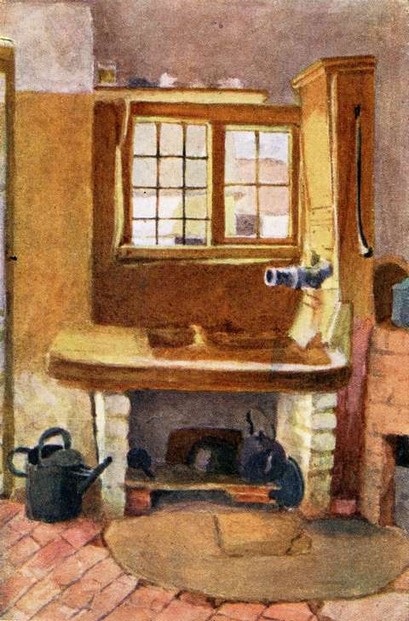Kate had difficulties in a regular school. She couldn't focus on anything but drawing where she excelled. Kate's parents both had artistic skills and they had no trouble noticing their daughter's talent. They gave her the first lessons and sent her to different art schools. The main problem with such education was limitations for women who, for instance, could not train one of the main drawing skills - drawing nude models. Kate never compensated for this handicap and got a lot of criticism for that.
At South Kensington, she studied with Elizabeth Thompson (1846-1933) who later became Lady Butler, and Helen Paterson (1848-1926), who later became Mrs William Allingham. Kate was especially connected with Elizabeth with whom she later worked in the same studio. They also together bribed the custodian to lock them in the school when everybody was gone, so they could work more.
After that, she enrolled in the Royal Female School of Art and took night classes at Heatherly School of Fine Art, where she met Walter Crane, probably the artist she most admired among her contemporaries. The next step was Slade School of Art but her education actually continued right to the end of her life. A fine example was her work with colors which she managed to master only through trials and error, partly due to being too focused on line drawing during formal training partly due to many revolutionary changes in the printing technique during her life.
She won her first award being only 12 years old and got her first commissions for Christmas and Valentine cards when she was still in school. On the other hand, she lacked social skills and had problems with writing all her life.













 Vintage Postcard Artists with 10 Examples of Easter Cardson 02/21/2025
Vintage Postcard Artists with 10 Examples of Easter Cardson 02/21/2025
 Valentine's Symbolson 01/23/2025
Valentine's Symbolson 01/23/2025
 Thanksgiving Symbolson 11/12/2024
Thanksgiving Symbolson 11/12/2024
 Famous Witches in Literary Historyon 10/06/2024
Famous Witches in Literary Historyon 10/06/2024



Do You Like Kate Greenaway's work?
Yes, that's right. She was able to portray numerus semingy the same scenes in many differetn ways. I believe her attention for the detail helped her with that. It was very likely acquired from her father, engraver, and from her mother, clothes-designer, at the same time.
I agree.
Yes, it's her work.
KG was focused on imagination, perception, ... Action was not her strongest point;)
Walter Crane and Randolph Caldecott, of course. Article about Edmund Evans is still in my machine ...
No, I didn't find her portrait of Cinderella yet. She may draw it when she was still young and unknown and it may be published uncredited. Still working on that.
Yes, this farm belonged to Kate's mom's family.
No, sorry, the resolution is too low.
Thank you for the four links at your wizzley's very end.
In particular, I like Kate Greenaway's work for its visual interest, manifesting itself here and in all four links, particularly the last, fourth one.
Might you agree that each one of her subjects in one same image manifests something different, in the way of looking or moving or standing? No one looks or moves or sits or stands the same in her two-person, two-plus-person, many-person scenes!
Thank you for the four links at the very end of your wizzley!
The aforementioned links allow even more access to all the Kate Greenaway works so likable to and liked by me.
The 15th in-text image on the last, fourth link amuses me with the girl so tired as to avail herself of a grassy sleep-amiable lawn.
The aforementioned model bears green shoes. Those shoes well could match any grass stains on her white frock, wouldn't one think?